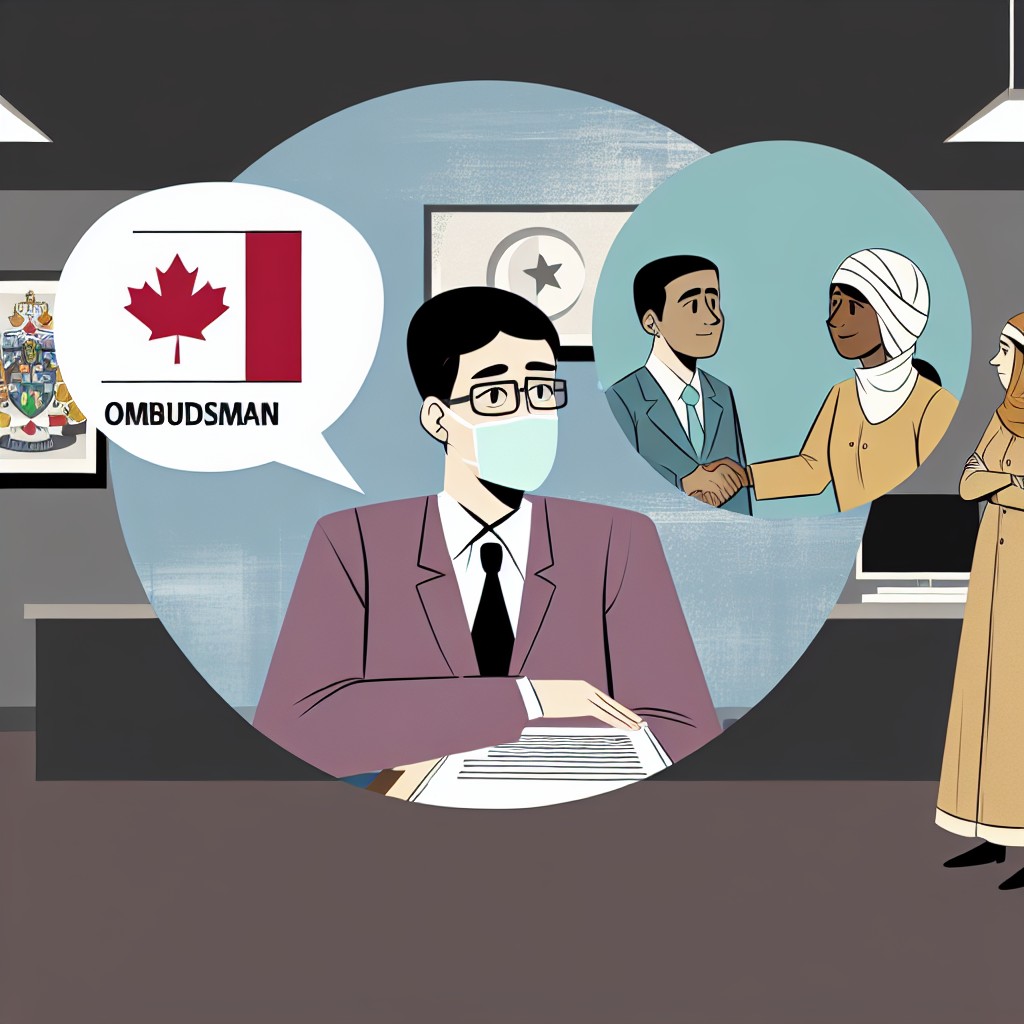Definition of the Ombudsman Role and Its Historical Context
The term “Ombudsman” originates from Sweden.
It translates to “representative” or “agent.”
Historically, ombudsmen addressed complaints against government officials.
This role emerged in the early 19th century.
Sweden appointed its first official ombudsman in 1809.
Since then, other countries have adopted the concept.
Ombudsmen serve various sectors, including public and private entities.
They act as impartial mediators in disputes between parties.
Furthermore, they investigate complaints and recommend solutions.
This function promotes transparency and accountability.
Ombudsmen often possess legal knowledge to navigate complex issues.
Additionally, they encourage dialogue between conflicting parties.
In recent years, ombudsmen have expanded their roles significantly.
They now address issues such as discrimination and harassment.
This evolution reflects societal changes and growing expectations.
Today, organizations increasingly recognize the importance of neutral mediation.
As a result, ombudsmen play a critical role in effective conflict resolution.
The Principles of Neutrality and Impartiality in Mediation
Understanding Neutrality
Neutrality is a foundational principle in mediation.
This principle requires mediators to remain unbiased throughout the process.
By maintaining neutrality, mediators create a safe environment for all parties.
Consequently, this encourages open and honest communication.
The Role of Impartiality
Impartiality complements neutrality in mediation efforts.
Mediators must avoid favoritism and treat all parties equally.
This builds trust, as parties feel their concerns are valued.
Moreover, impartiality prevents conflicts of interest from arising.
Unlock Your Career Potential
Visualize a clear path to success with our tailored Career Consulting service. Personalized insights in just 1-3 days.
Get StartedBenefits of Neutral Mediation
Neutral mediation fosters collaboration among disputing parties.
This collaborative spirit can lead to sustainable solutions.
Moreover, it often reduces the need for litigation.
In addition, neutral mediation saves time and resources.
Challenges in Maintaining Neutrality and Impartiality
Mediators may face challenges in remaining neutral.
For example, strong emotions can complicate the mediation process.
In such situations, mediators must consciously practice their neutrality.
Furthermore, external pressures can influence a mediator’s impartial stance.
Strategies for Upholding Neutrality and Impartiality
- Set clear ground rules at the beginning of the session.
- Conduct separate meetings to manage emotionally charged issues.
- Continuously reflect on personal biases and attitudes.
Additionally, ongoing training and self-awareness can reinforce these principles.
These strategies empower mediators to navigate complex dynamics effectively.
The Process of Mediation
Understanding Mediation
Mediation is a structured process for resolving disputes.
It allows involved parties to communicate openly and seek solutions.
A neutral mediator guides the conversation to promote understanding.
Steps from Initial Complaint to Resolution
Filing the Initial Complaint
The process begins with filing an initial complaint.
This complaint outlines the issues and concerns of the parties involved.
It must be submitted in writing to the mediator for review.
Pre-Mediation Preparation
After receiving the complaint, the mediator prepares for the session.
This preparation includes reviewing the complaint and setting an agenda.
The mediator may contact each party to discuss their perspectives.
Conducting the Mediation Session
The mediation session typically starts with introductions.
The mediator then explains the ground rules for the discussion.
Each party has the opportunity to present their viewpoints.
The mediator encourages open dialogue to foster understanding.
Exploring Options for Resolution
After discussing the issues, the mediator helps identify possible solutions.
The parties brainstorm options that may resolve their conflict.
During this phase, creativity is encouraged to find mutually acceptable outcomes.
Reaching an Agreement
Once options are discussed, the mediator assists in formulating an agreement.
This agreement should reflect the interests of all parties involved.
After finalizing the agreement, it is documented for everyone’s reference.
Post-Mediation Follow-up and Support
Post-mediation involves verifying that all parties understand the agreement.
Follow-up sessions may be scheduled to ensure compliance and satisfaction.
The mediator can provide support as needed during this period.
Uncover the Details: Differences Between Environmental Scientists and Officers
Case Studies Highlighting Successful Outcomes Facilitated by Ombudsmen
Conflict Resolution in Educational Institutions
At Riverwood High School, the Ombudsman played a crucial role in resolving a significant dispute.
A conflict arose between faculty members regarding curriculum changes.
Through mediation, the Ombudsman facilitated open communication.
Both parties expressed their concerns and reached a consensus.
This outcome improved collaboration among staff and enhanced the learning environment.
Corporate Dispute Mediation
At Vertex Solutions, a notable conflict emerged about project management processes.
The Ombudsman organized a series of mediation sessions.
These sessions enabled team members to voice frustrations and suggest improvements.
Consequently, the team developed a more efficient workflow.
The resolution boosted team morale and increased productivity.
Healthcare System Grievance Resolution
Harmony Health Services utilized an Ombudsman to address patient complaints effectively.
A patient expressed dissatisfaction with their treatment plan.
The Ombudsman facilitated a meeting between the patient and the healthcare team.
This allowed for a transparent discussion about treatment options.
Ultimately, the patient felt heard and was more satisfied with their care.
Community Mediation for Local Government
The city of Maple Grove faced community tensions over zoning laws.
An Ombudsman organized public forums to address community concerns.
These forums fostered dialogue between residents and city officials.
Stakeholders proposed sustainable solutions together as a result.
This collaboration built trust within the community and improved governance.
Delve into the Subject: Importance of Environmental Officers in Sustainable Development
The Impact of Ombudsman Services on Public Trust in Organizations
Enhancing Transparency
Ombudsman services promote transparency in organizational processes.
They provide unbiased assessments of complaints and concerns.
Consequently, individuals feel more heard and validated.
This transparency builds a foundation of trust between the public and organizations.
Boosting Accountability
Ombudsmen hold organizations accountable for their actions.
They investigate complaints impartially and thoroughly.
This proactive approach ensures responsible decision-making.
As a result, organizations demonstrate their commitment to best practices.
Fostering Open Communication
Ombudsman services encourage open dialogue between the public and organizations.
They create safe spaces for individuals to express concerns.
In turn, this communication enhances mutual understanding.
Ultimately, both parties benefit from increased collaboration.
Influencing Organizational Culture
The presence of an Ombudsman can shift organizational culture positively.
Organizations become more responsive to feedback and complaints.
Such responsiveness fosters a culture of continuous improvement.
Moreover, it helps organizations prioritize ethical practices.
Strengthening Trust in Systemic Processes
Public trust increases when individuals see effective Ombudsman services in action.
Knowing there is a neutral party to address issues reassures the public.
When complaints are resolved fairly, confidence in the system grows.
This trust is essential for a healthy relationship between organizations and their stakeholders.
Uncover the Details: The Role of Correctional Officers in Public Safety

The Difference Between Ombudsman Mediation and Traditional Legal Processes
Defining Ombudsman Mediation
Ombudsman mediation serves as an informal conflict resolution process.
An ombudsman acts as a neutral third party in disputes.
They facilitate communication between conflicting parties.
This approach emphasizes resolving issues without legal systems.
Characteristics of Traditional Legal Processes
Traditional legal processes typically involve formal court proceedings.
These processes are governed by strict laws and regulations.
Parties present their cases to a judge or jury.
Outcomes are binding and often follow lengthy procedures.
Furthermore, legal processes can escalate tensions between parties.
Key Differences in Approach
Ombudsman mediation prioritizes collaboration over confrontation.
In contrast, traditional legal processes may foster an adversarial environment.
This difference affects communication styles and outcomes.
Moreover, ombudsman mediation seeks mutually beneficial resolutions.
Cost and Time Efficiency
Mediation often reduces the time required to resolve disputes.
It can be significantly less expensive than traditional litigation.
Parties usually save on attorney fees and court costs.
Additionally, ombudsman mediation promotes quicker, less stressful resolutions.
Confidentiality and Privacy
Ombudsman mediation typically maintains confidentiality.
Discussions during mediation are not public records.
This privacy encourages open and honest dialogue.
Conversely, traditional legal cases often become part of public record.
Impact on Relationships After Dispute Resolution
Both processes offer unique advantages and limitations.
Choosing between them depends on the nature of the dispute.
Ultimately, ombudsman mediation can foster better relationships post-dispute.
In contrast, legal processes may leave parties feeling fractured.
Discover More: Work Environment of Correctional Officers in Canadian Prisons
Challenges Faced by Ombudsmen in Maintaining Neutrality
Understanding Ombudsman Roles
Ombudsmen act as impartial intermediaries in conflict resolution.
They advocate for fairness while ensuring confidentiality.
However, their roles can be compromised by biases within organizations.
Pressure to Align with Institutional Goals
Many ombudsmen face pressure to support their organization’s mission.
This pressure can cloud their judgment and affect neutrality.
Consequently, some may unintentionally favor organizational interests.
External Influences Affecting Perception
Ombudsmen also contend with external pressures from stakeholders.
Stakeholders often have varying expectations about outcomes.
This diversity can complicate the ombudsman’s ability to remain neutral.
Handling Conflict of Interest Situations
Conflicts of interest can arise in multiple ways.
Connections with certain staff may impede impartiality.
Moreover, ombudsmen must navigate personal relationships carefully.
Importance of Training and Awareness
Ongoing training is crucial for sustaining neutrality.
Education helps ombudsmen recognize their biases.
Moreover, awareness of ethical standards reinforces their commitment to neutrality.
Maintaining Effective Communication
Effective communication builds trust among parties involved.
Furthermore, clear communication reinforces the ombudsman’s neutrality.
Regular feedback mechanisms can enhance transparency in the process.
Implications of Challenges in Sustaining Neutrality
Ombudsmen face numerous challenges in maintaining neutrality.
Understanding these challenges helps foster a more effective mediation process.
Future Trends in Mediation
The Evolving Role of Ombudsmen
Ombudsmen play a crucial role in modern dispute resolution.
They act as neutral parties in conflicts.
This helps ensure that mediation processes are fair and unbiased.
Organizations increasingly recognize the value of impartial mediators.
As the landscape of mediation changes, Ombudsmen must adapt.
They will need to embrace new technologies and methodologies.
Integration of Technology in Mediation
Advanced technologies are revolutionizing how mediation is conducted.
Online mediation platforms offer accessibility and convenience.
These tools facilitate faster resolution of conflicts.
Moreover, virtual mediation can reduce costs significantly.
Ombudsmen must become proficient with these digital tools.
Training in technology will be essential for future mediators.
Increased Focus on Conflict Prevention
Proactive strategies are gaining importance in conflict resolution.
Ombudsmen are increasingly involved in conflict prevention initiatives.
This includes conducting workshops and training sessions.
Such programs educate individuals about effective communication methods.
Focusing on prevention can reduce the need for formal mediation.
Expanding Reach to Diverse Populations
Ombudsmen are reaching out to underrepresented communities.
Diversity in mediation practices enhances inclusivity.
By engaging diverse groups, Ombudsmen foster trust and understanding.
This approach ensures that everyone feels heard and valued.
Furthermore, it helps address specific cultural needs during mediation.
Collaboration with Other Stakeholders
Collaboration is becoming essential in mediation processes.
Ombudsmen work alongside various professionals to enhance outcomes.
This includes legal experts, social workers, and community leaders.
Such partnerships enrich the mediation experience for individuals involved.
These collaborations help generate holistic solutions to conflicts.
Training and Professional Development
Continuous learning is vital for modern Ombudsmen.
Training programs must address emerging challenges in mediation.
Workshops can keep Ombudsmen updated on best practices.
Moreover, professional development fosters adaptability and innovation.
Ultimately, this enhances the overall quality of mediation services.
Additional Resources
The Impact of Digital Platforms on News and Journalistic Content
The Office of the Ombudsman for Mental Health and Employee Well …




